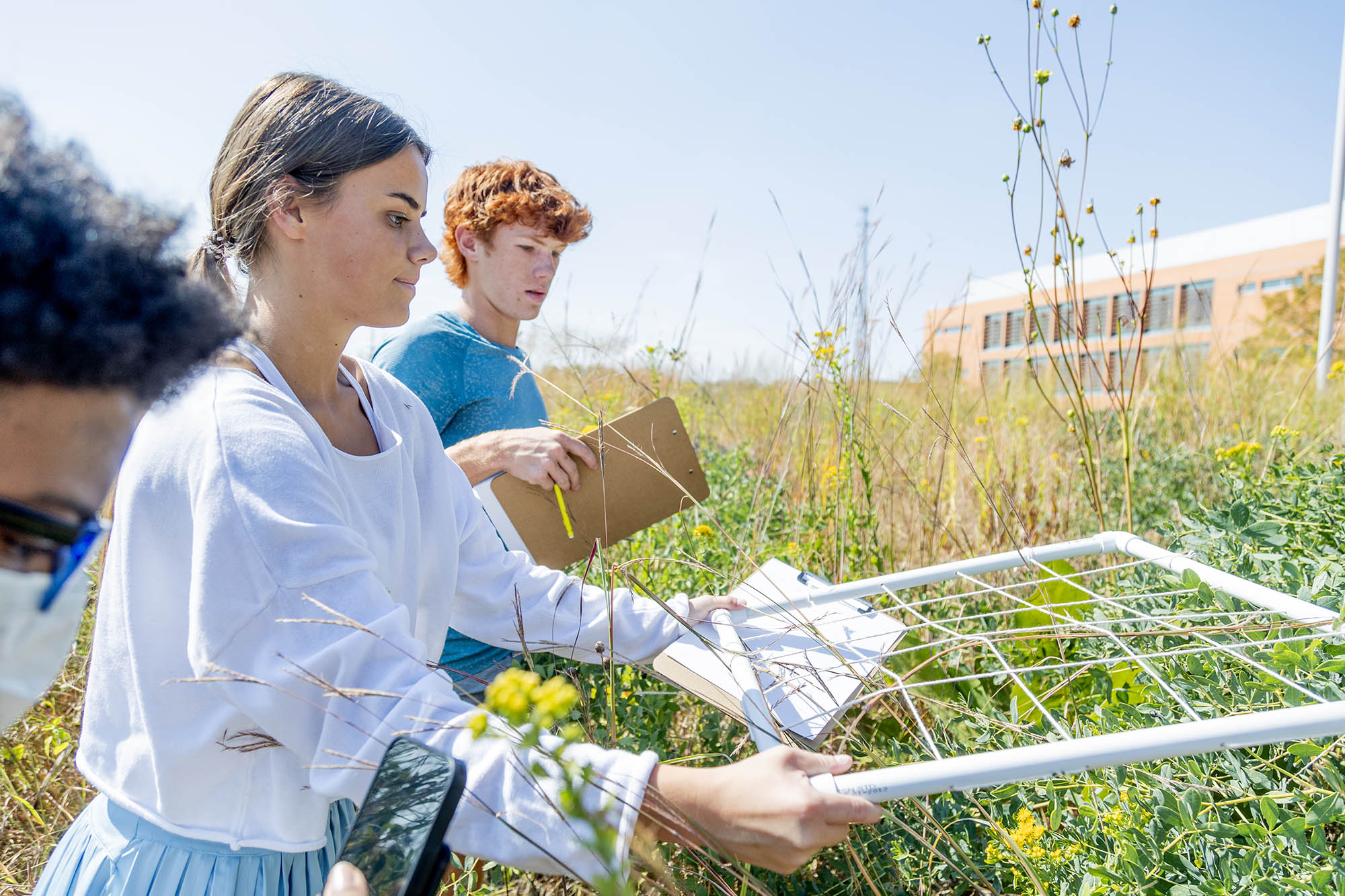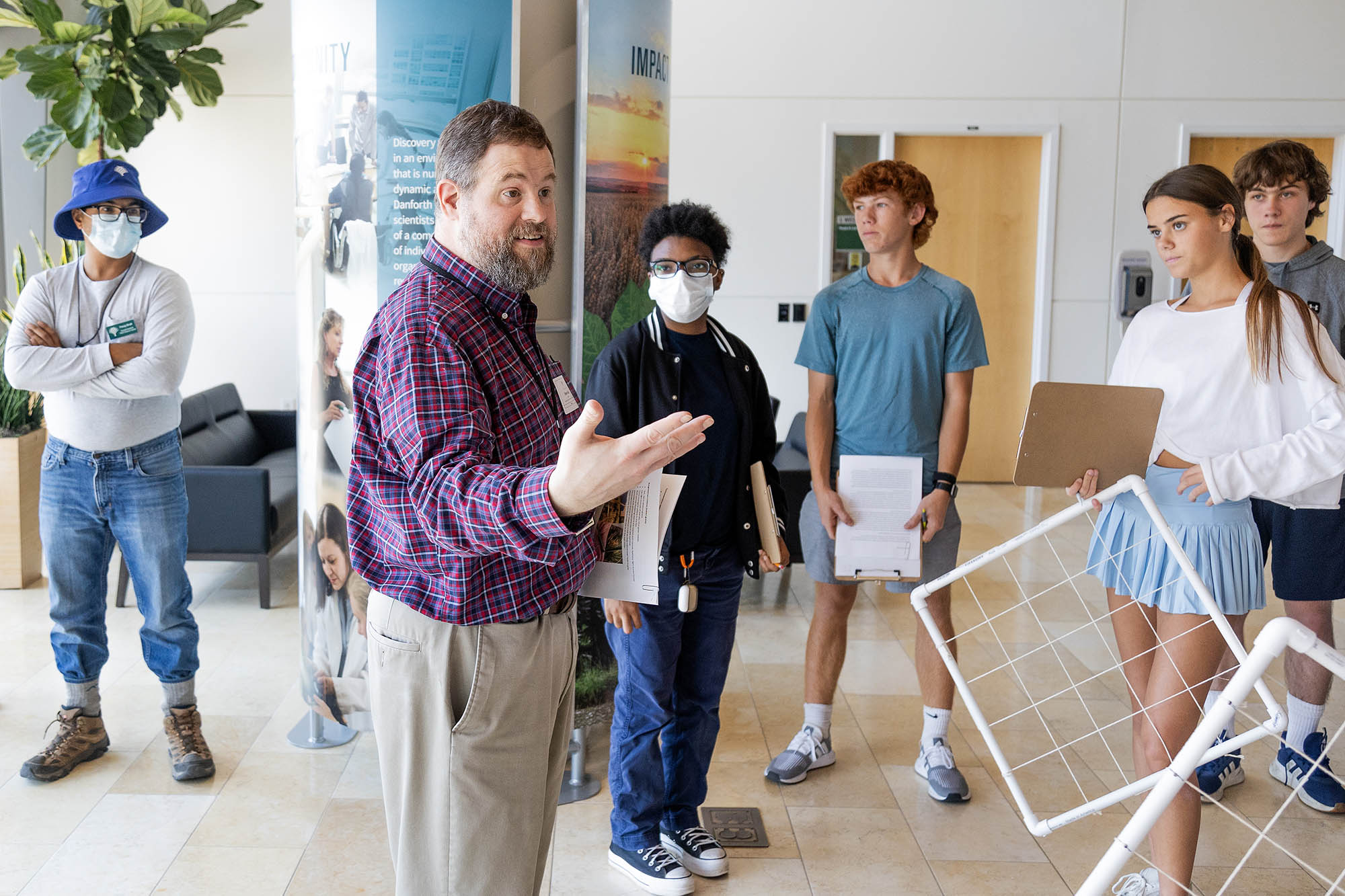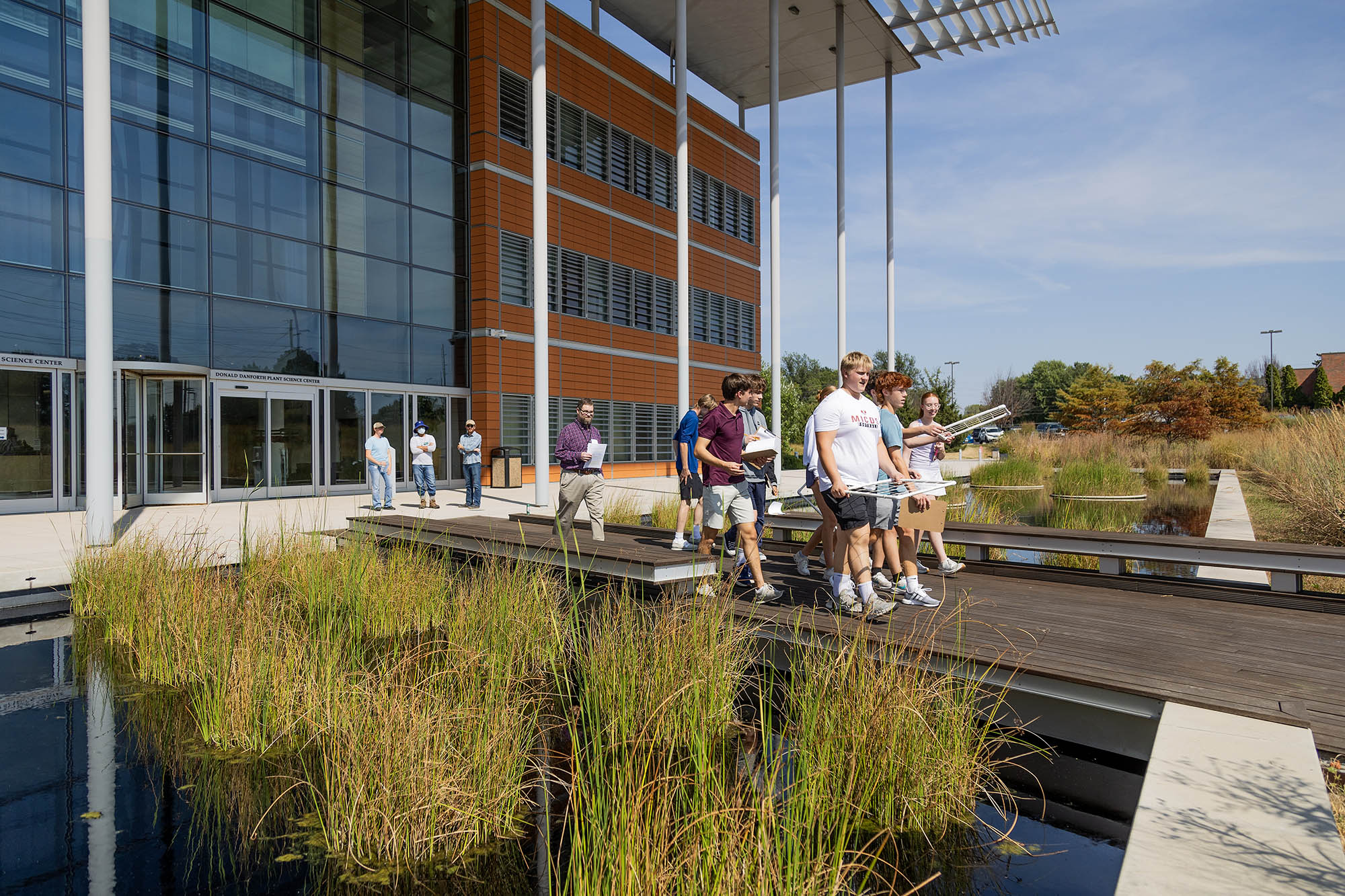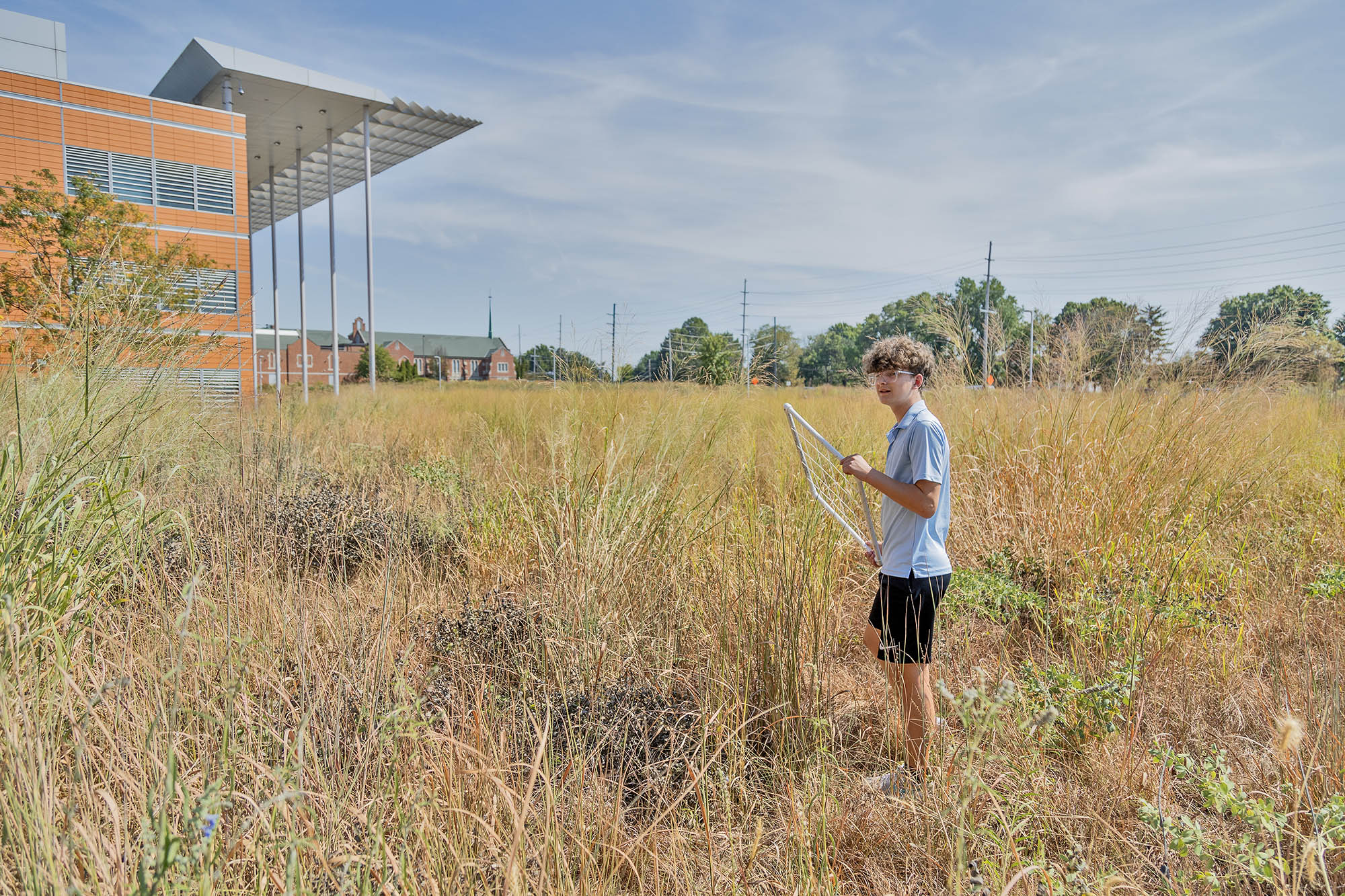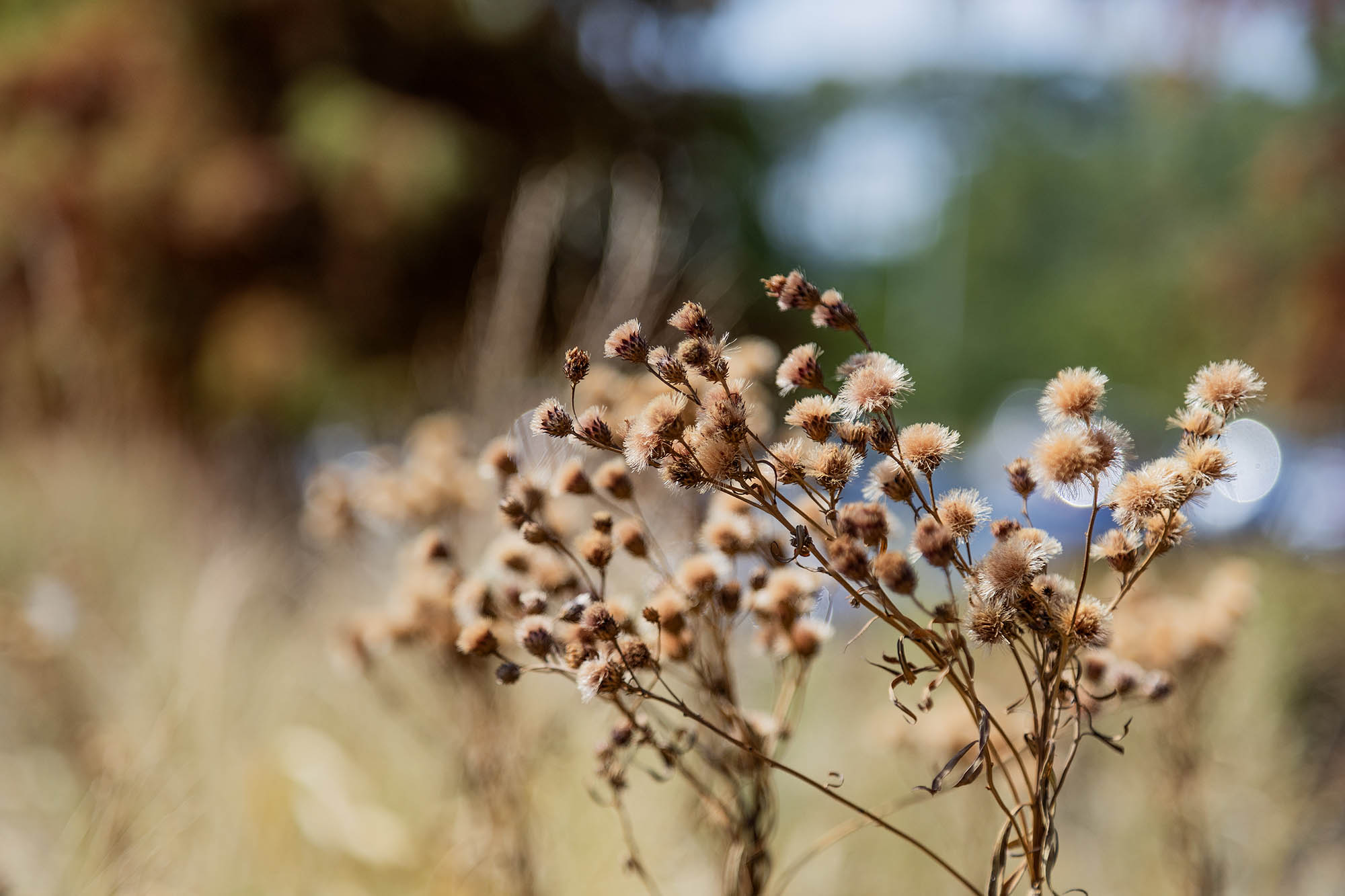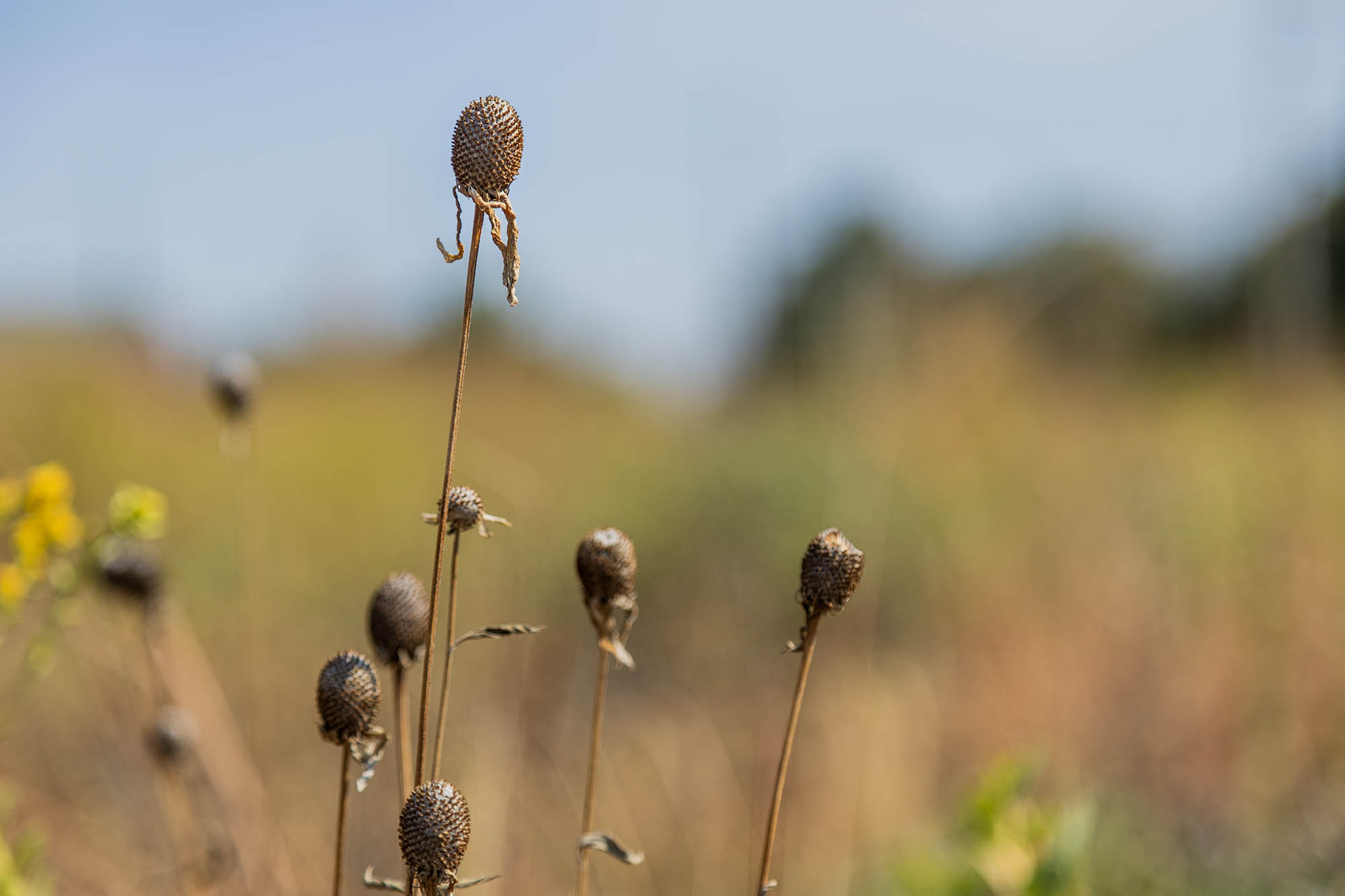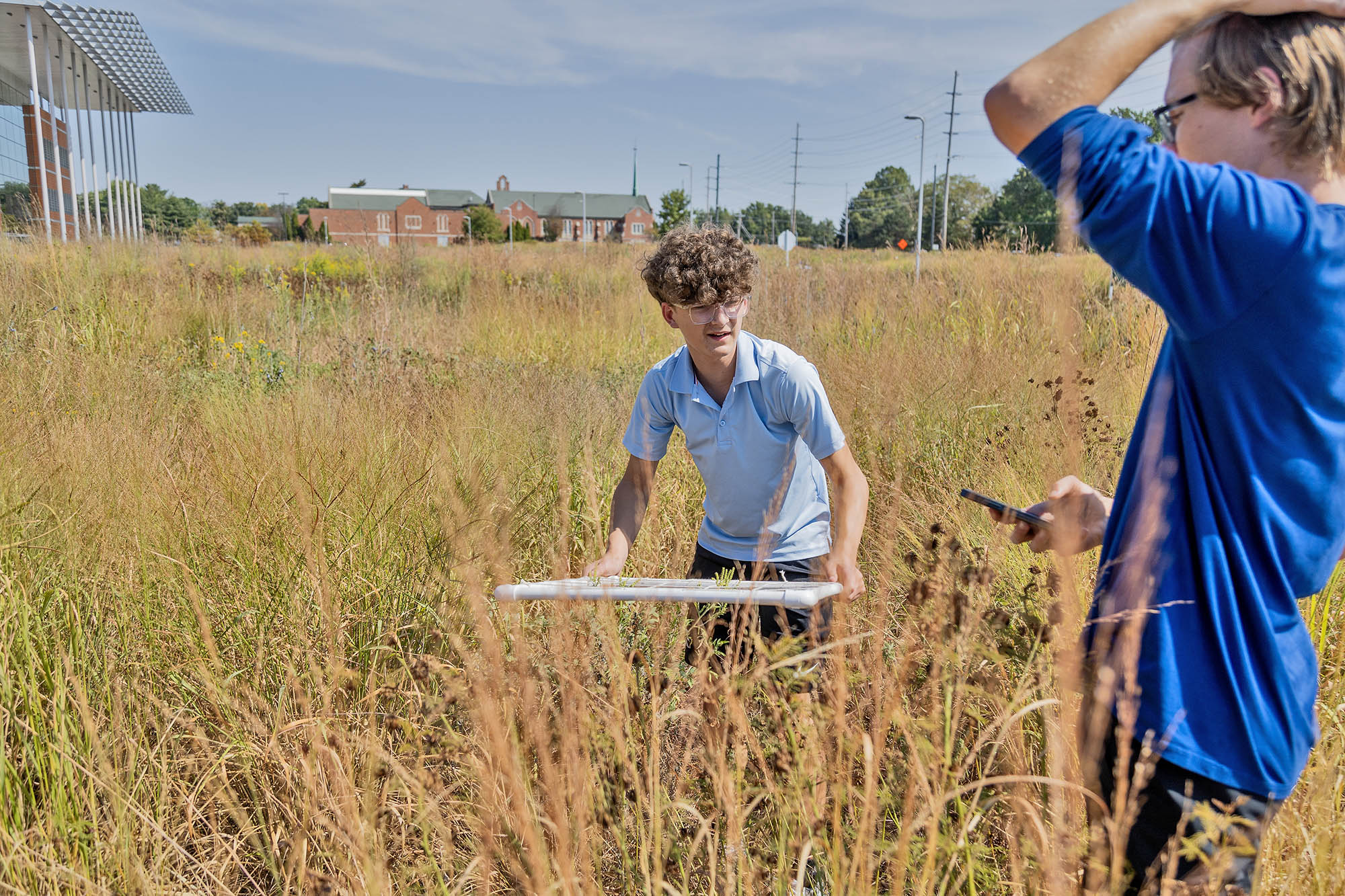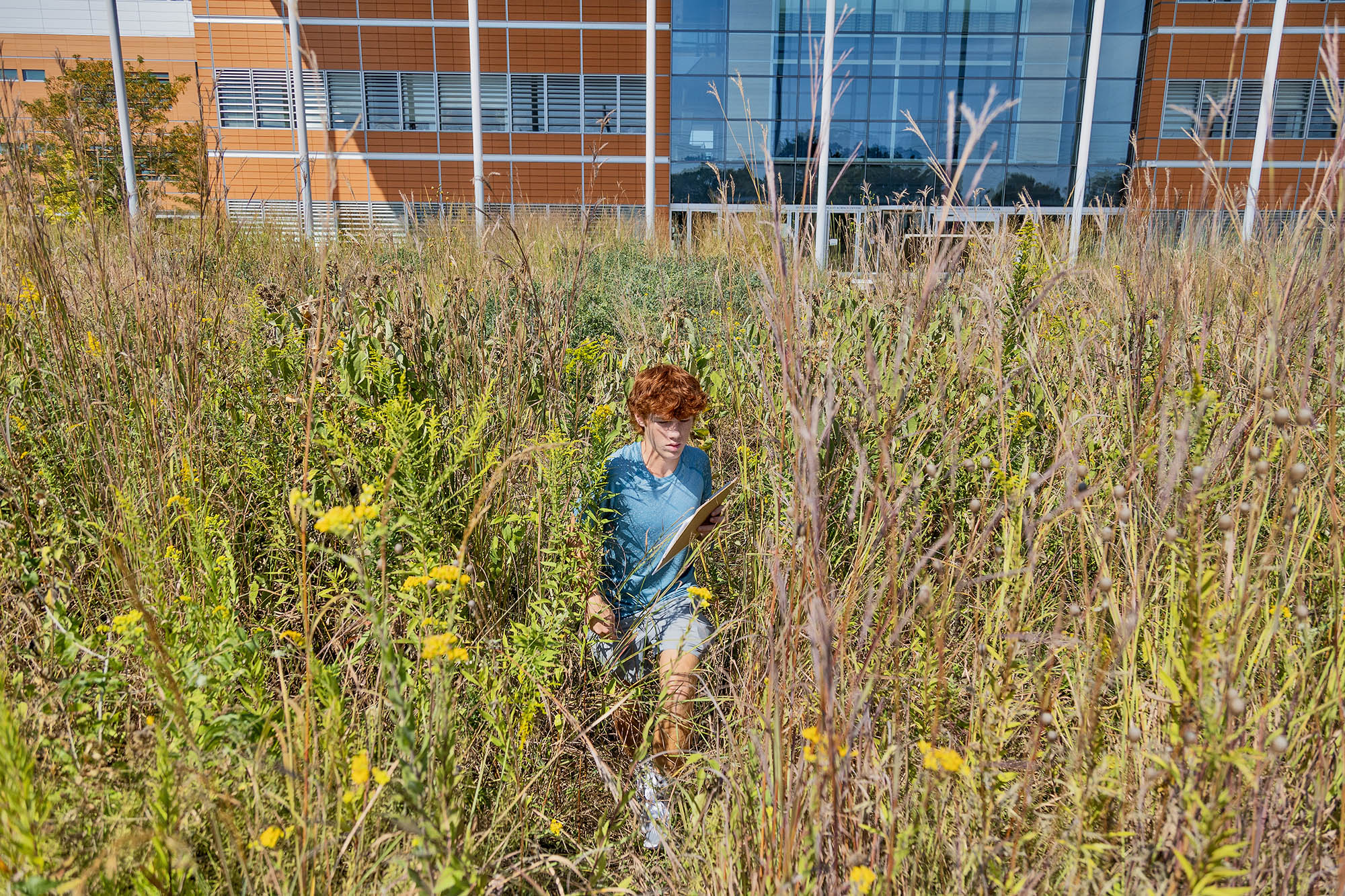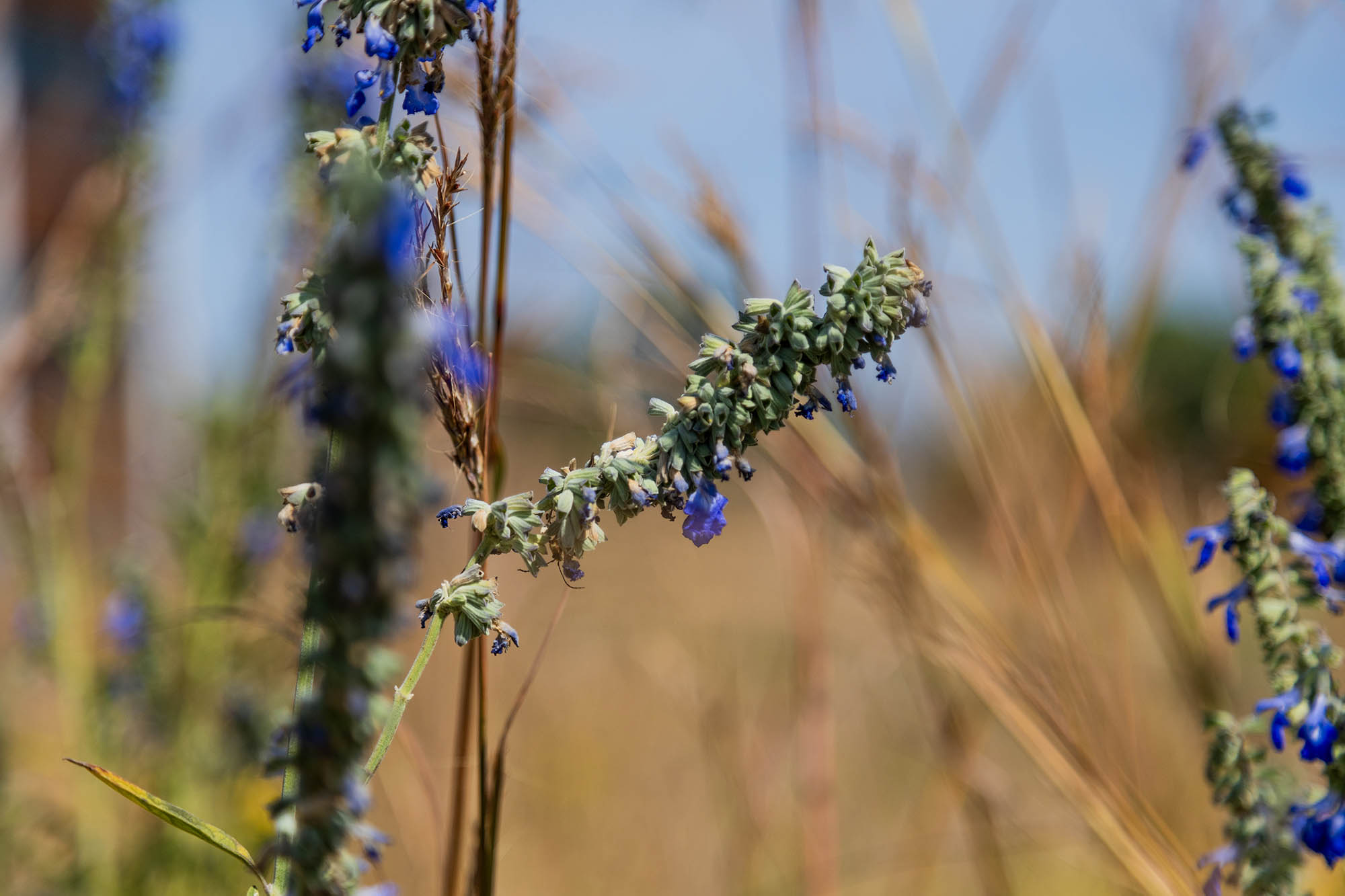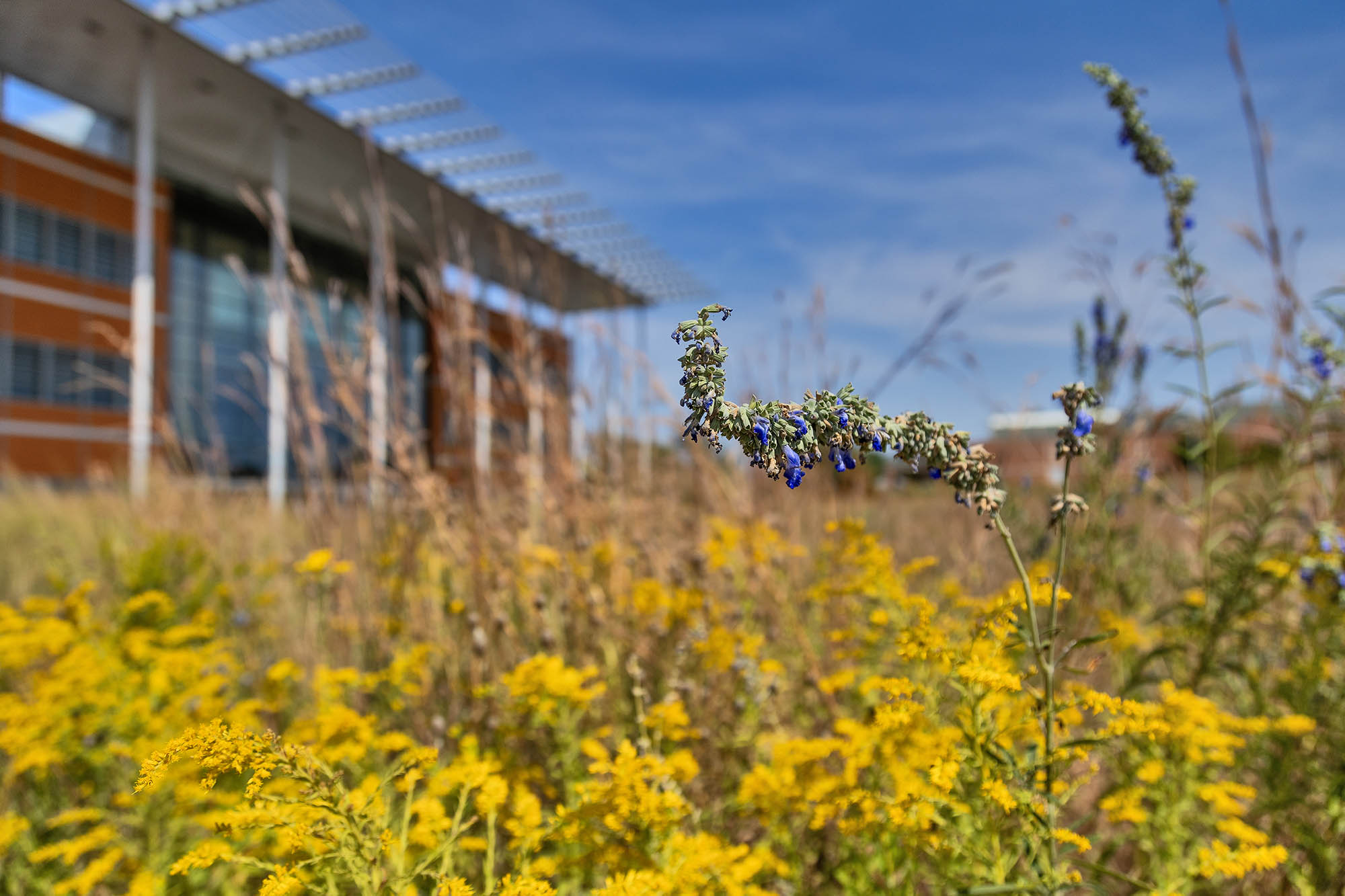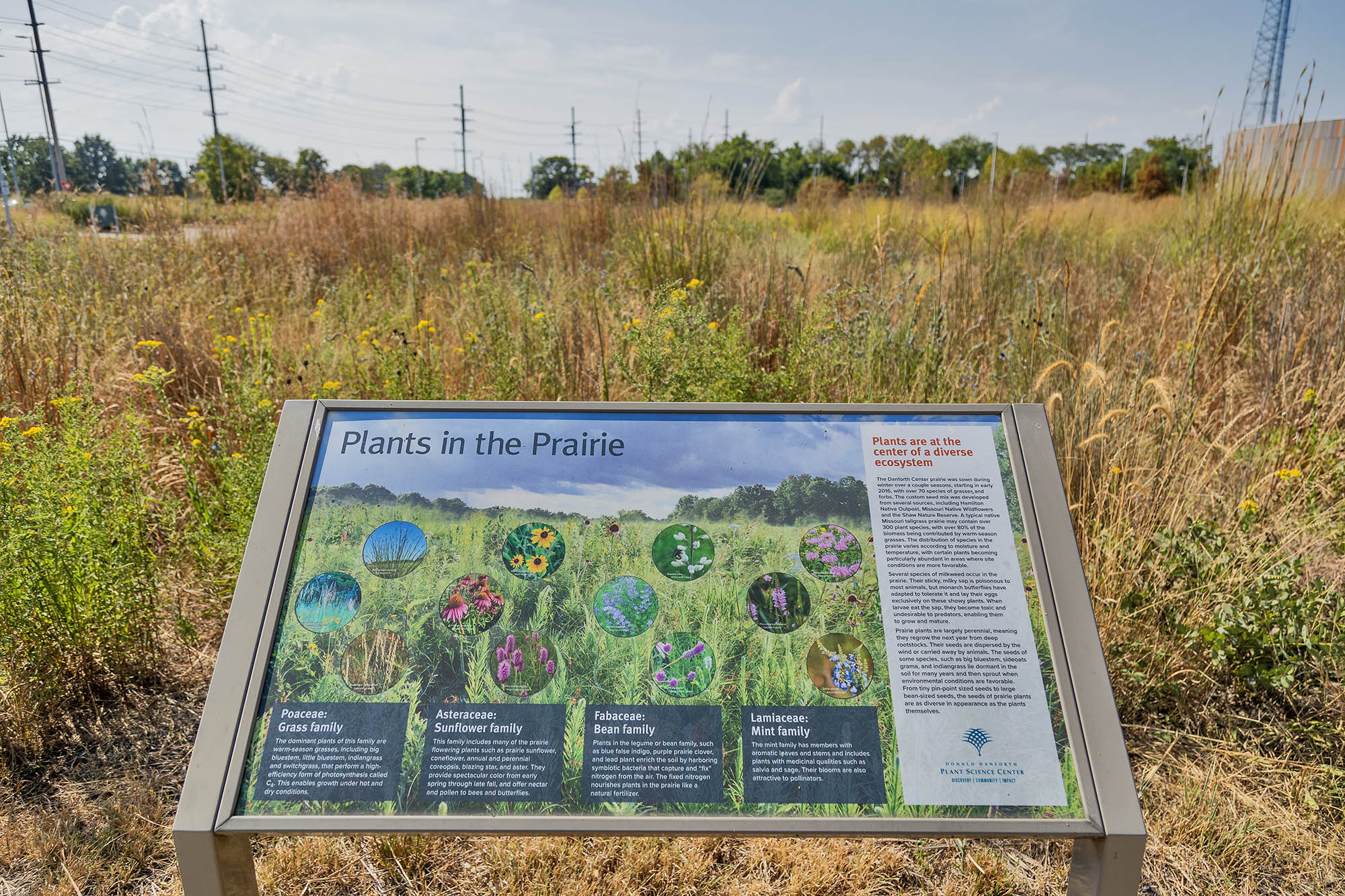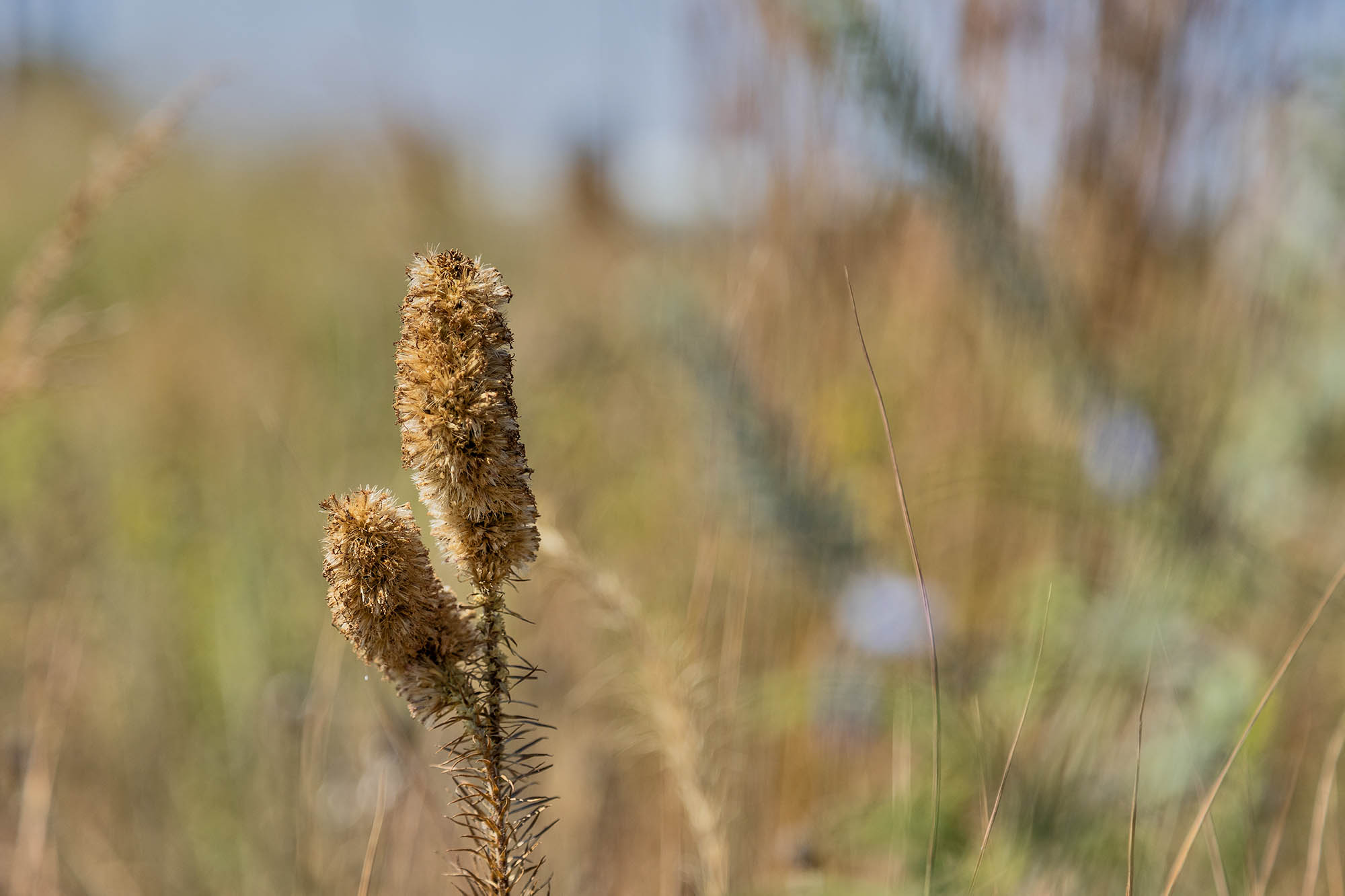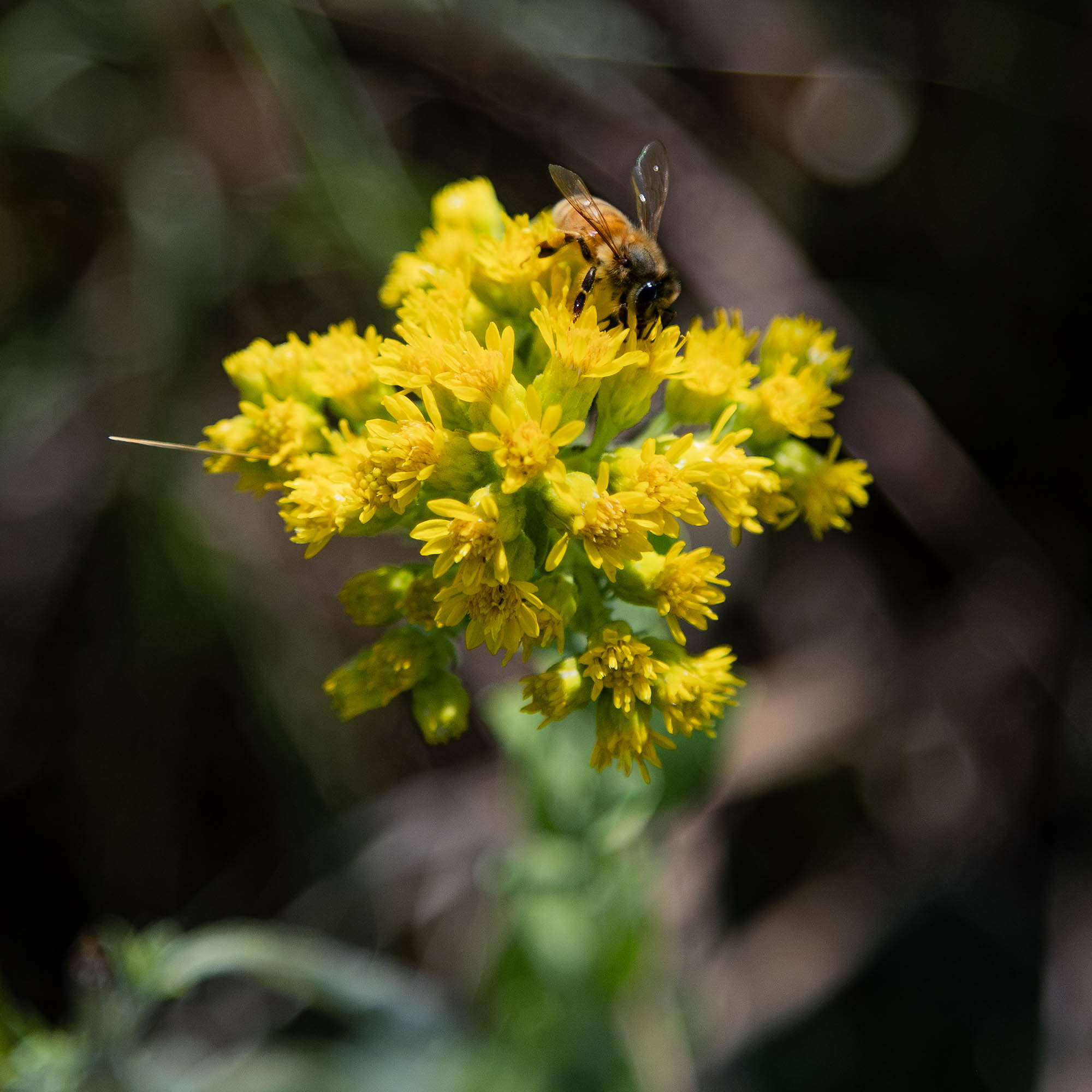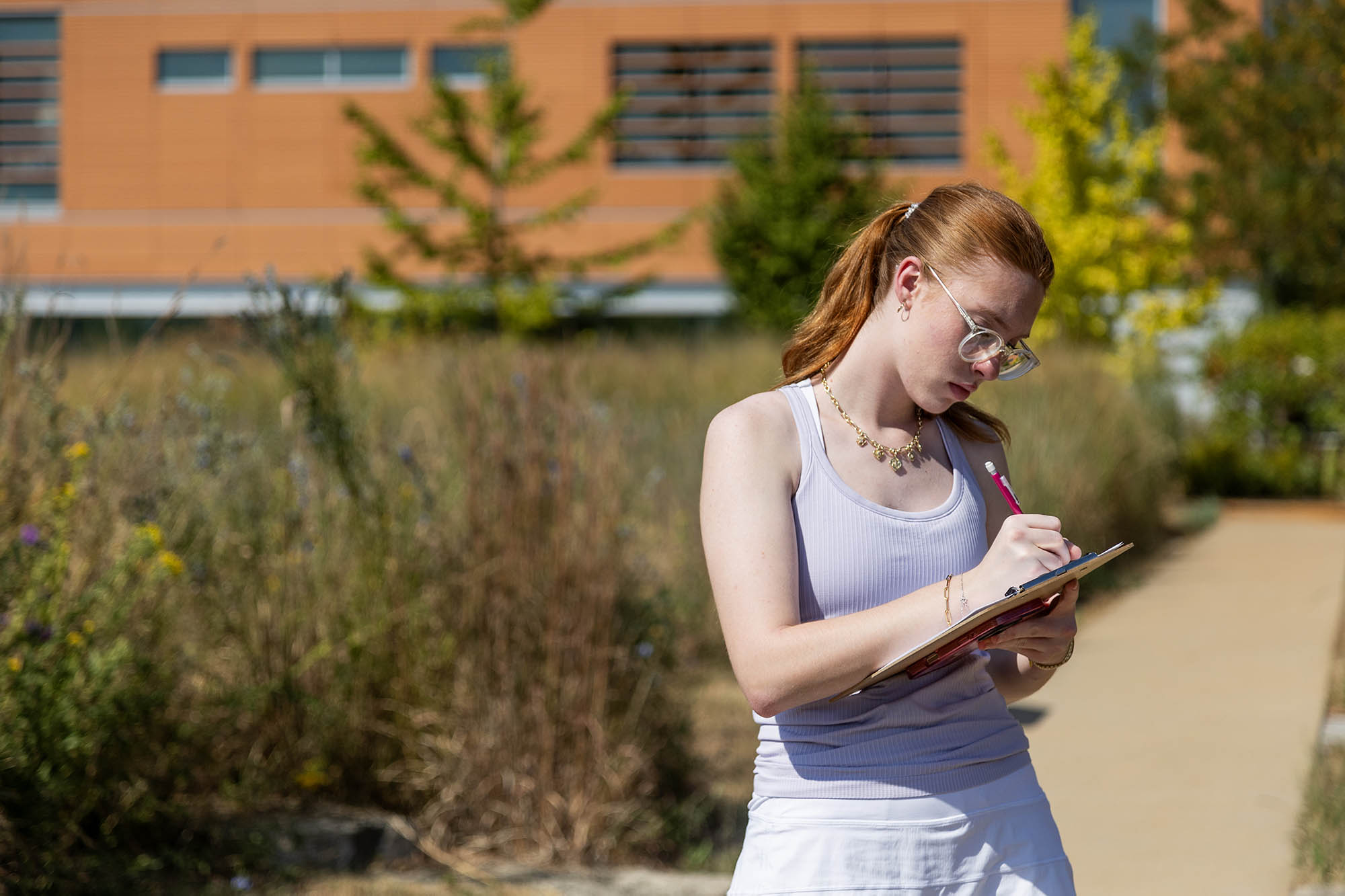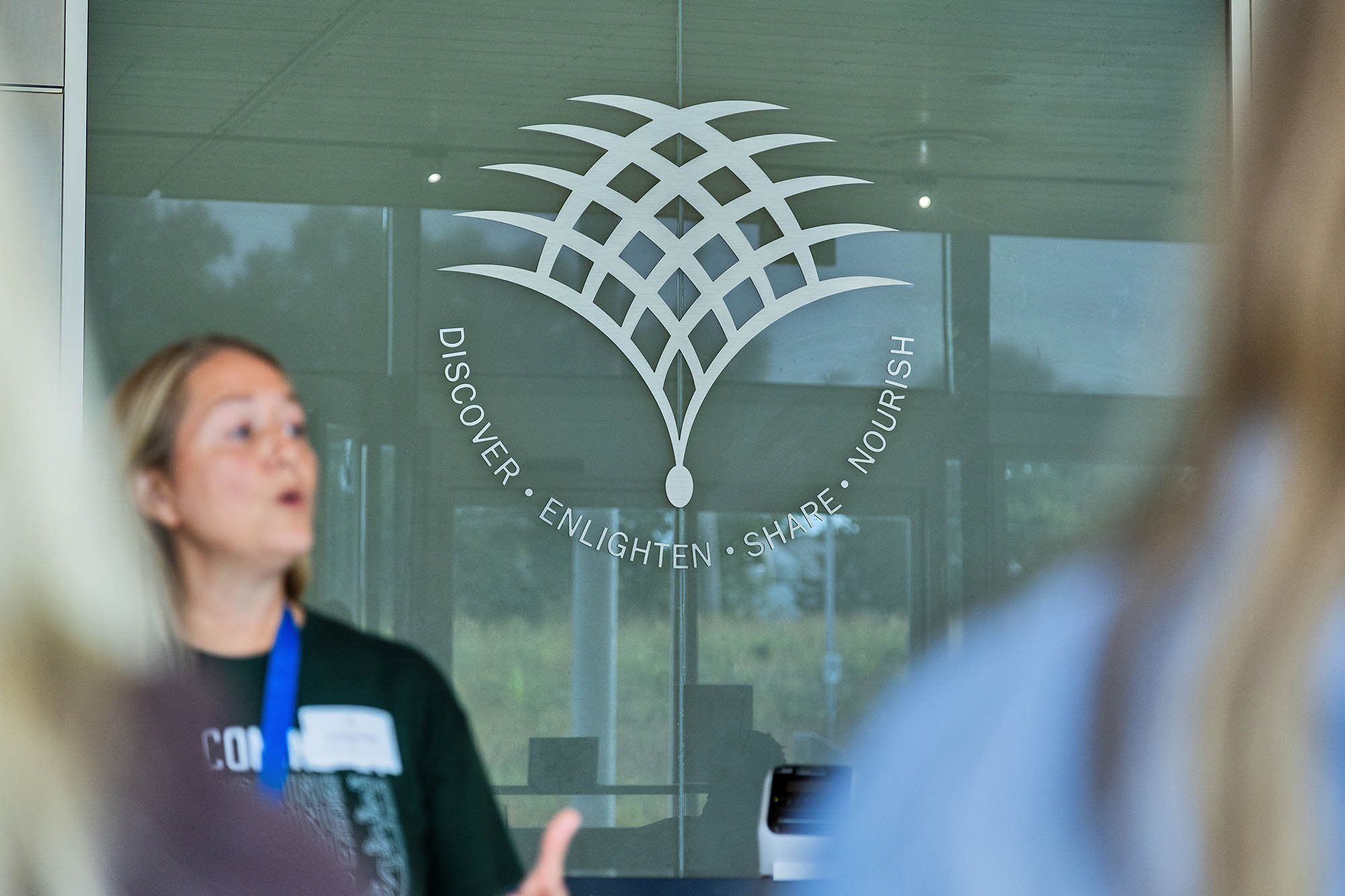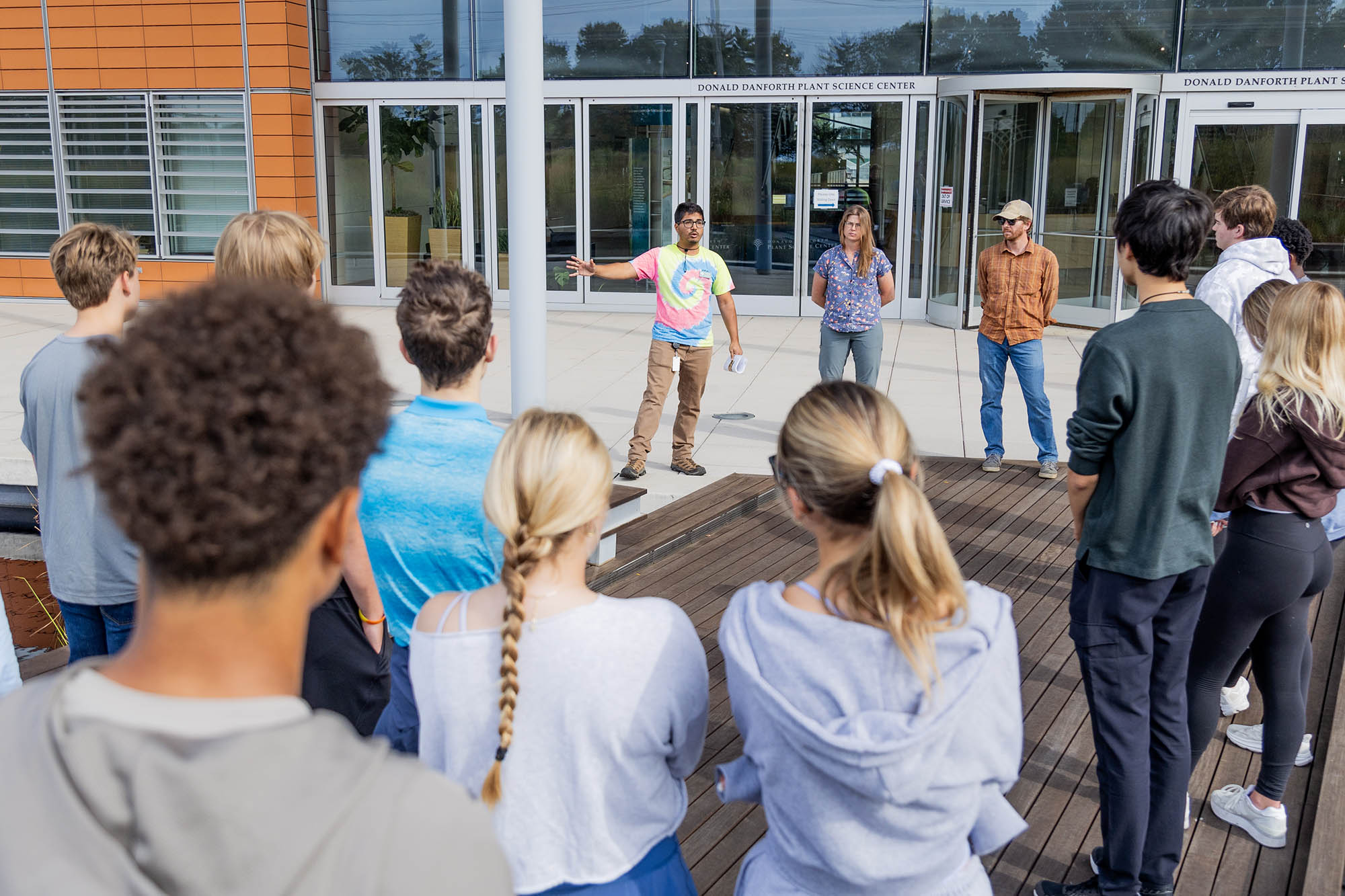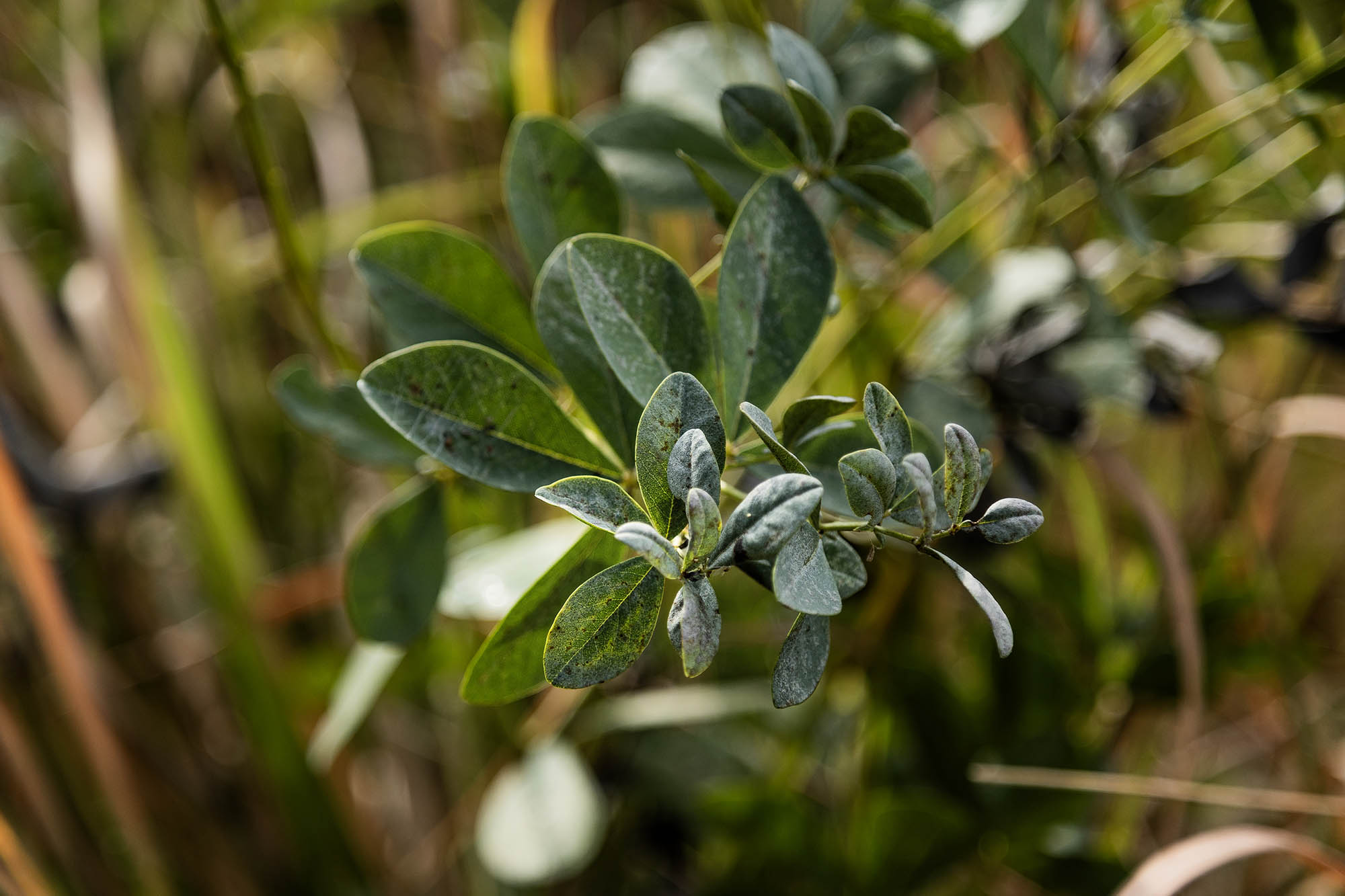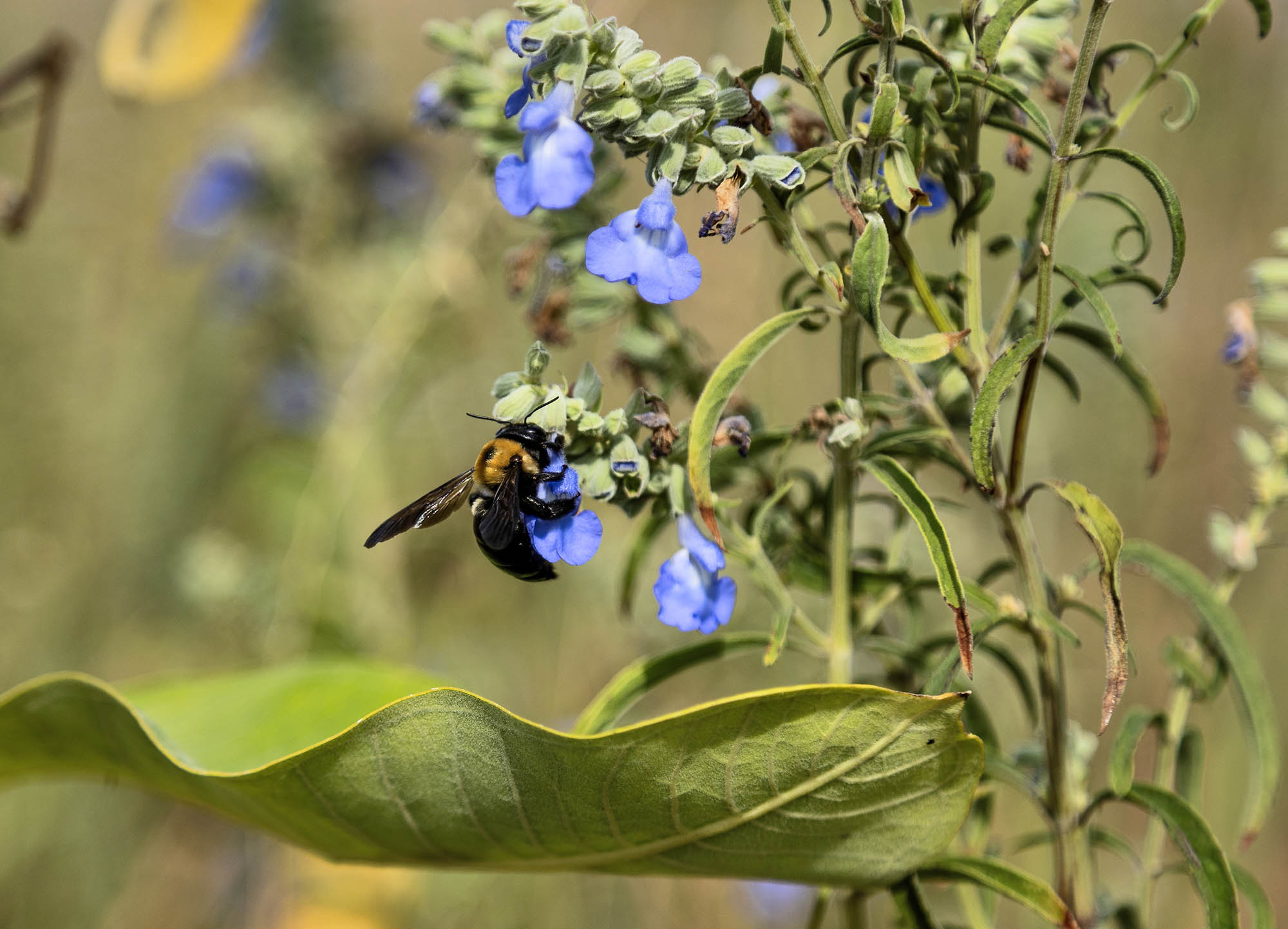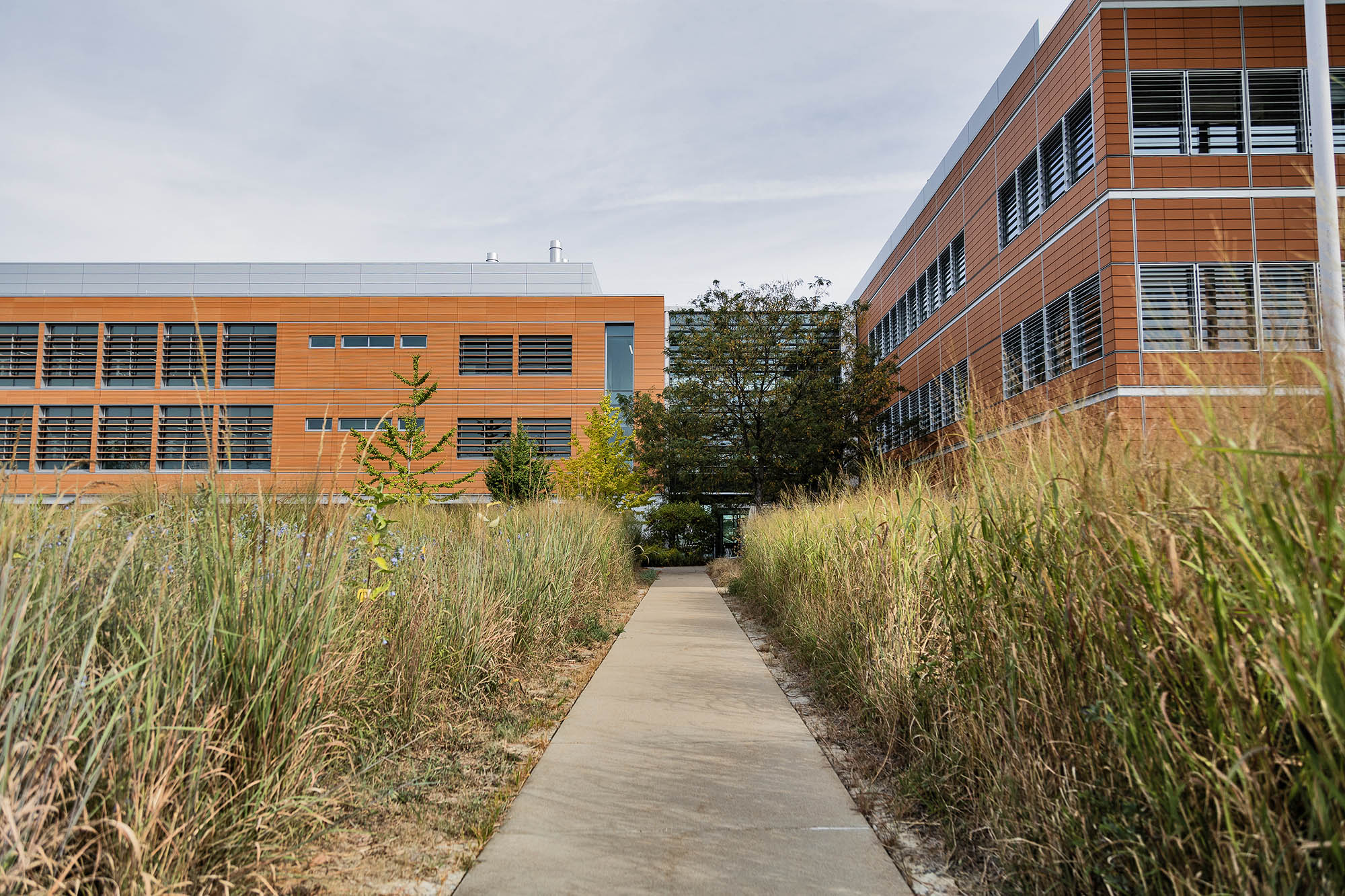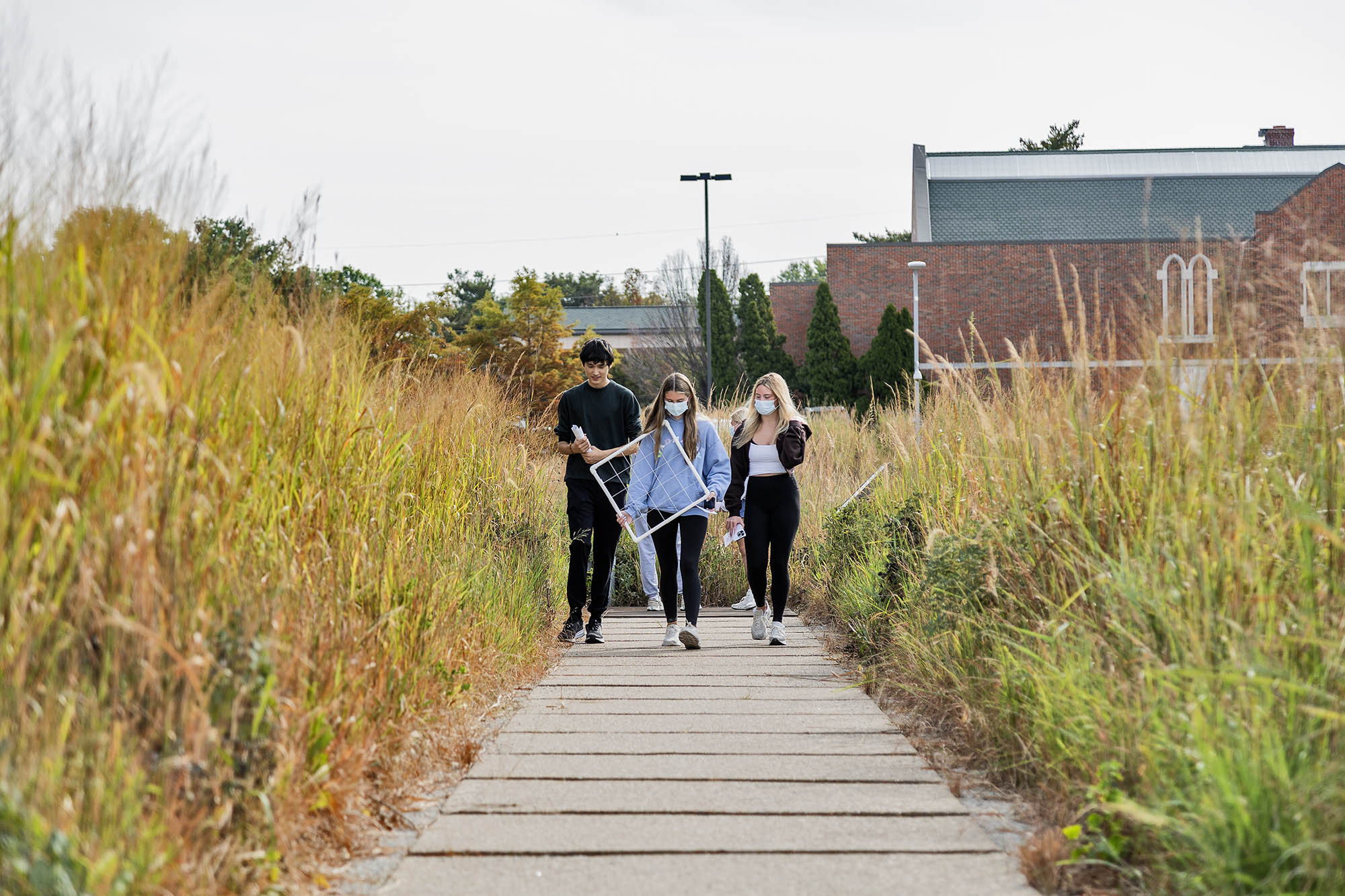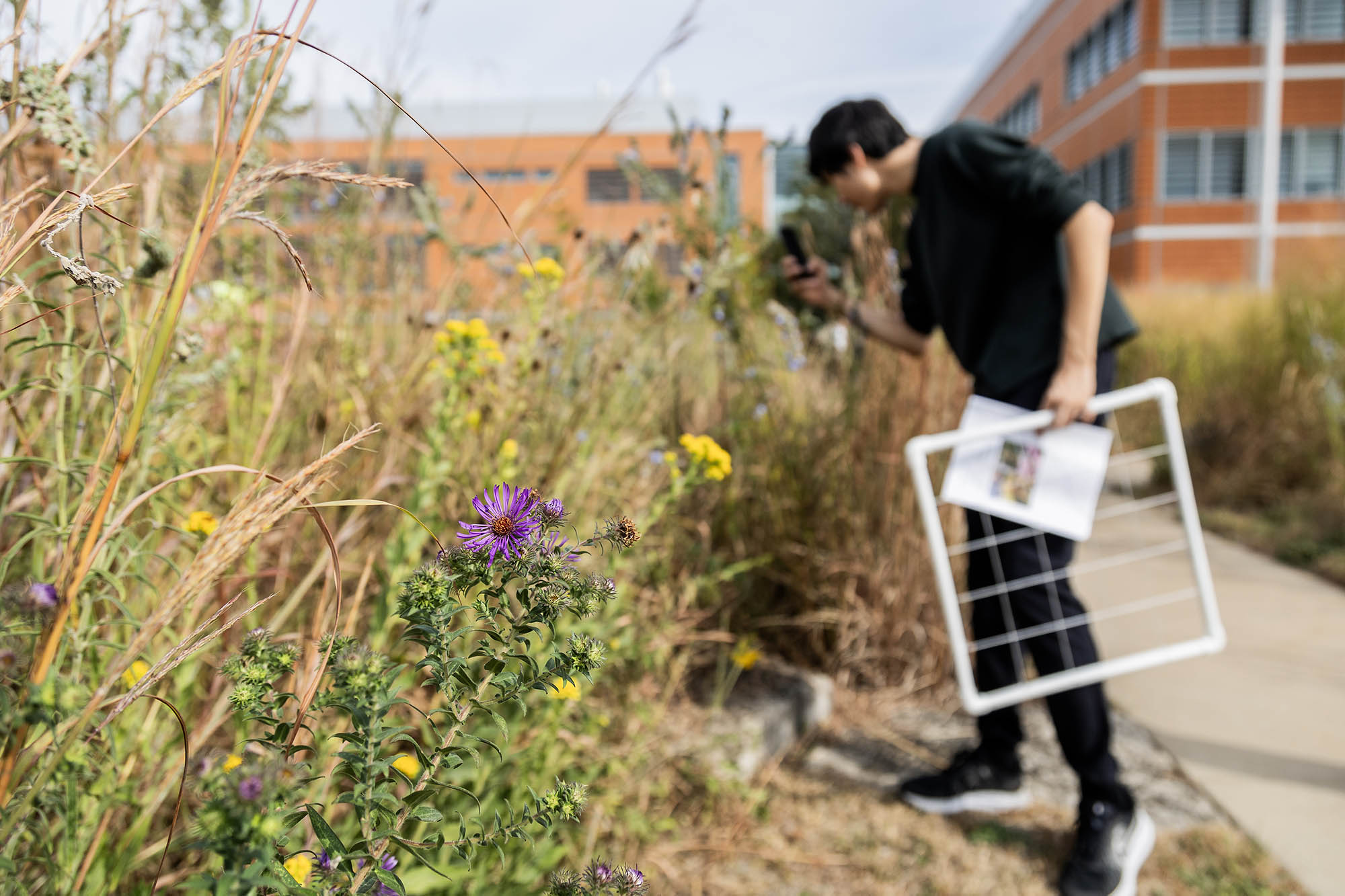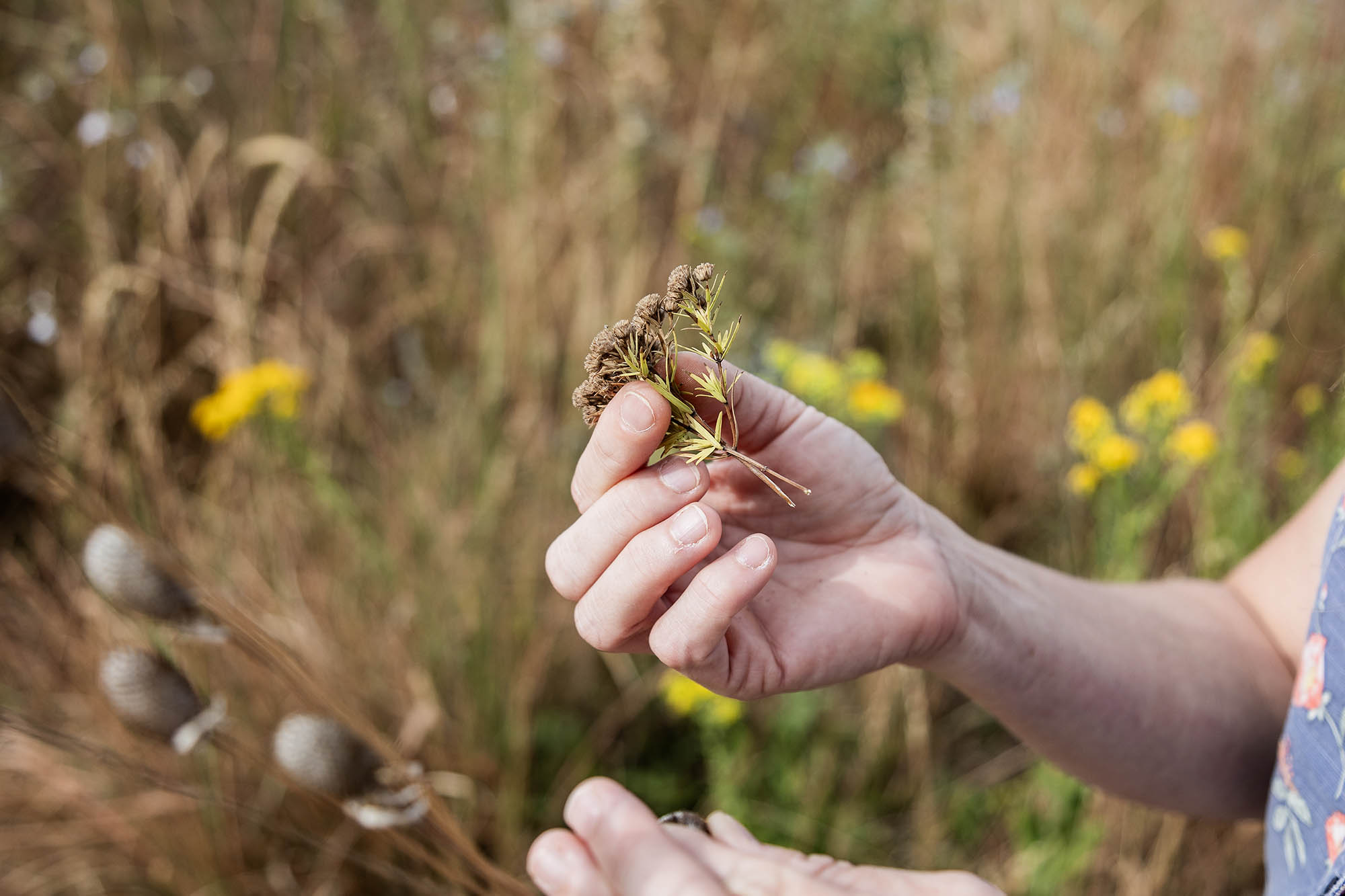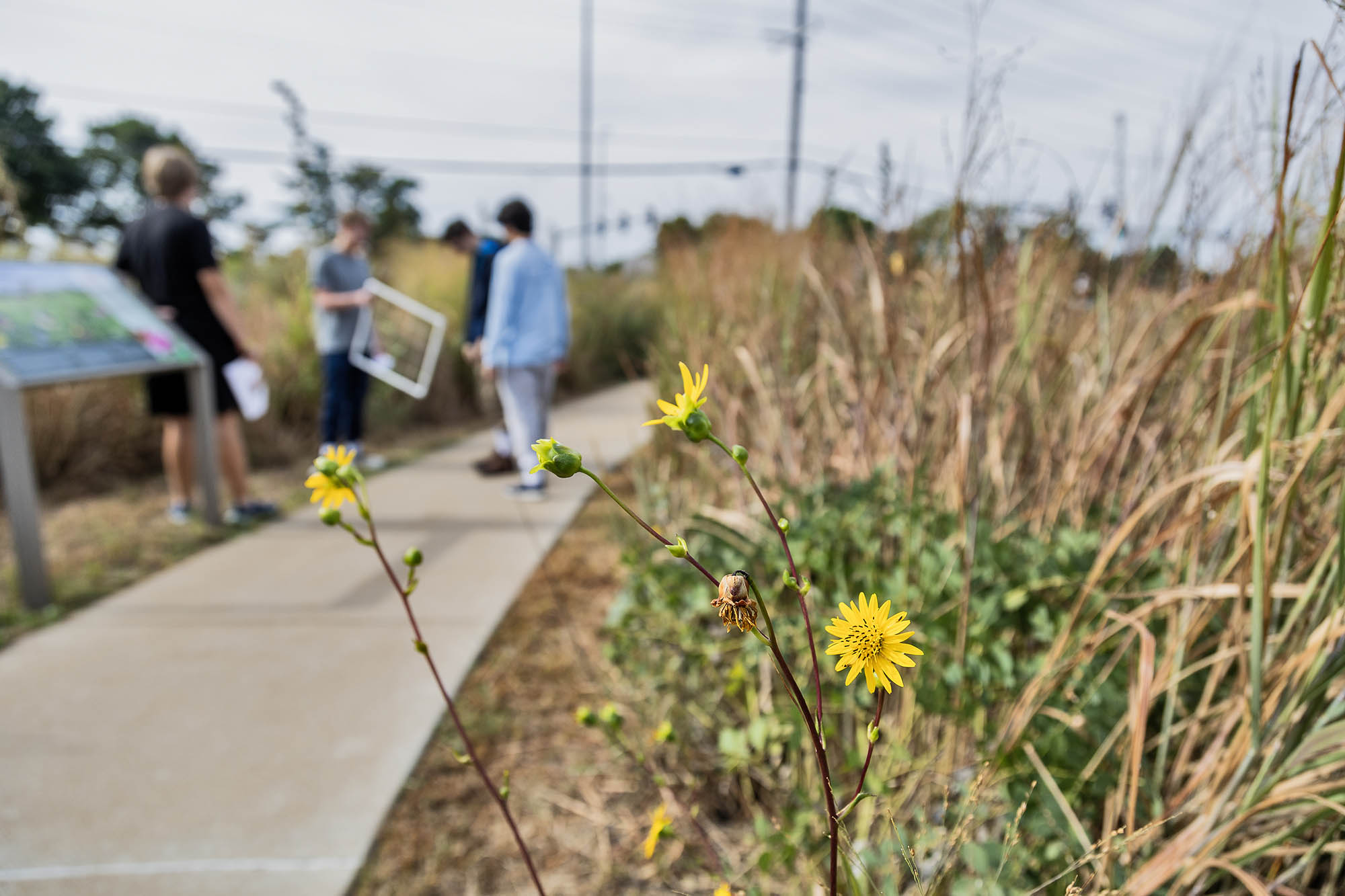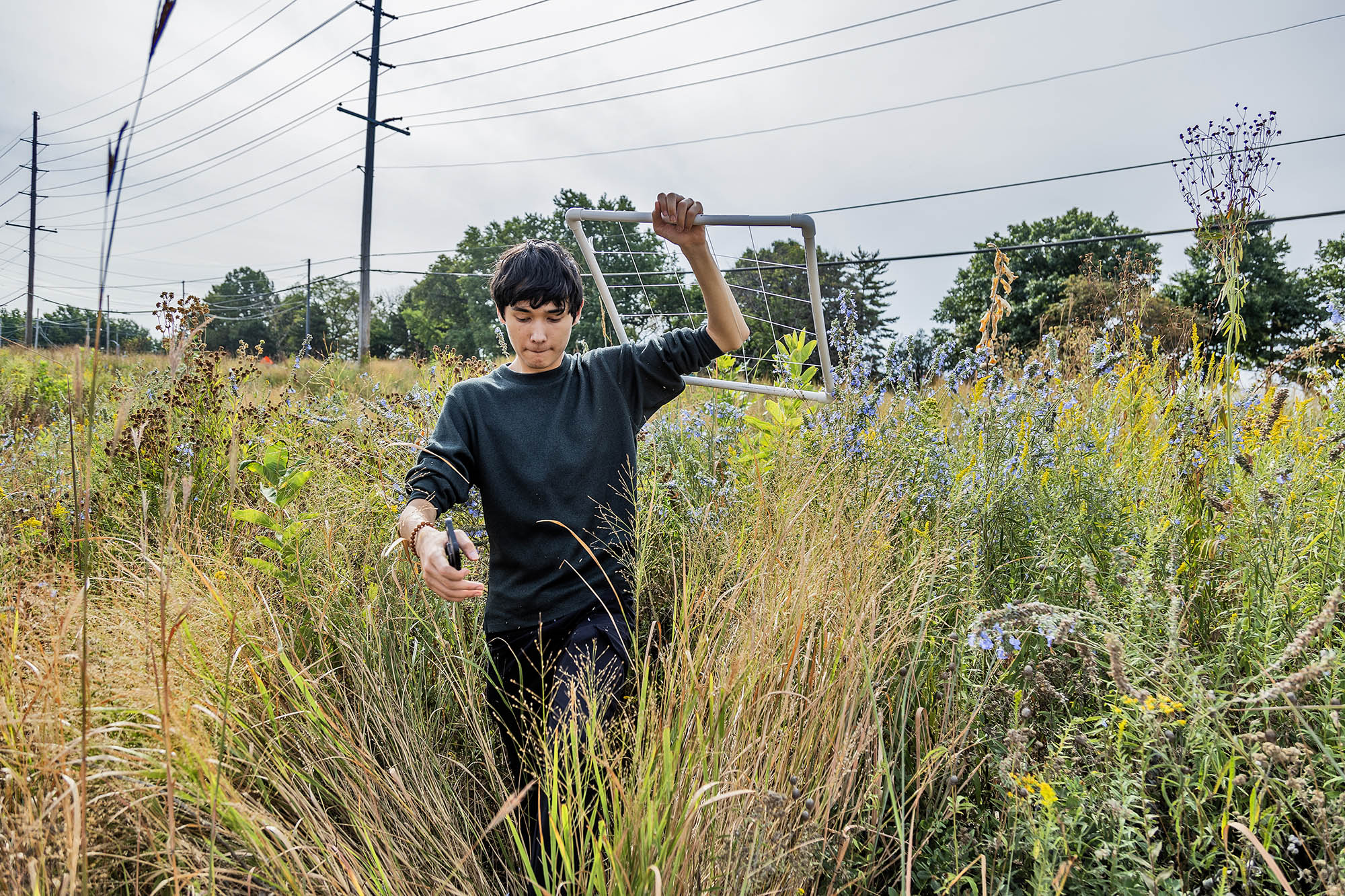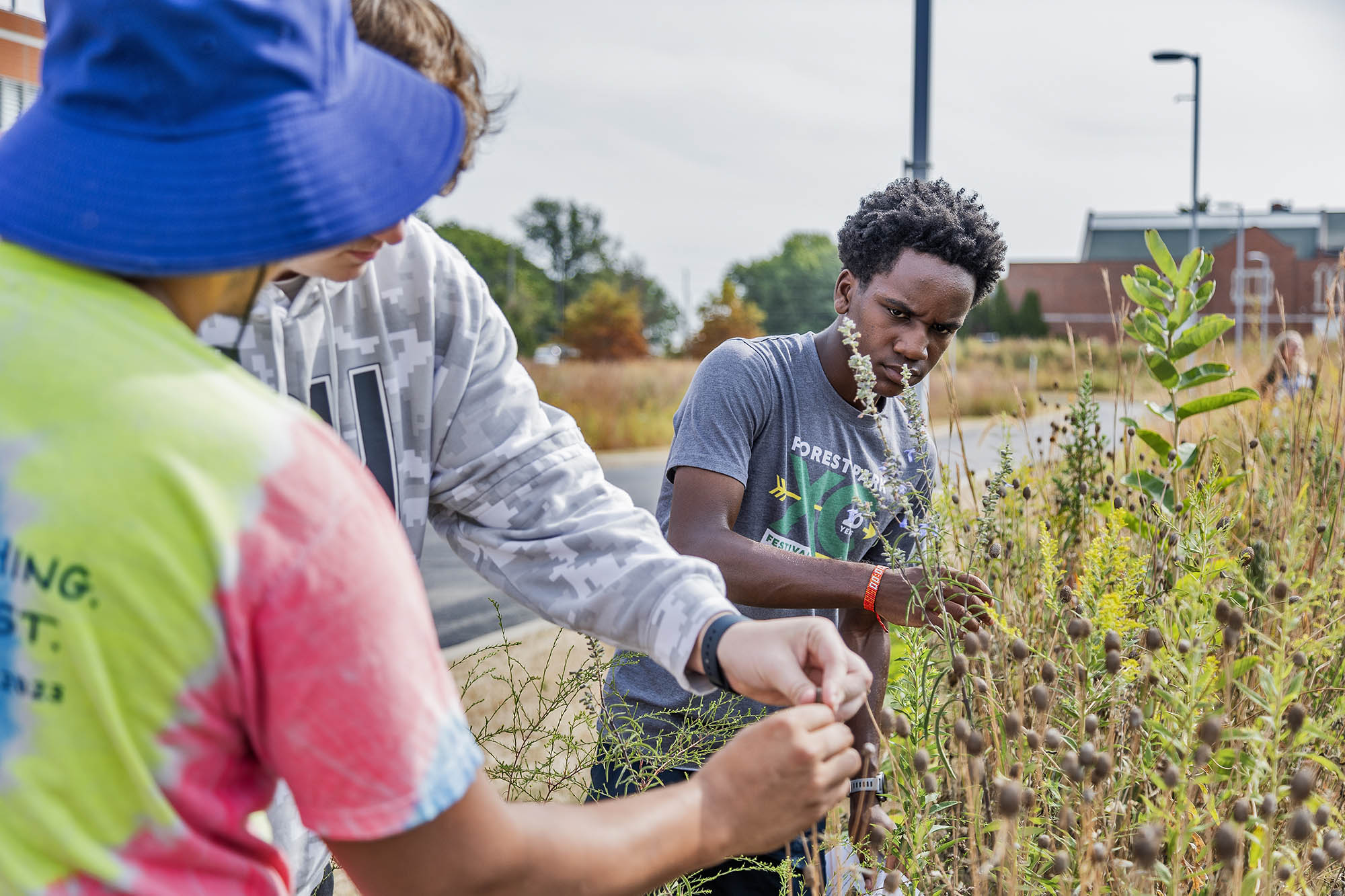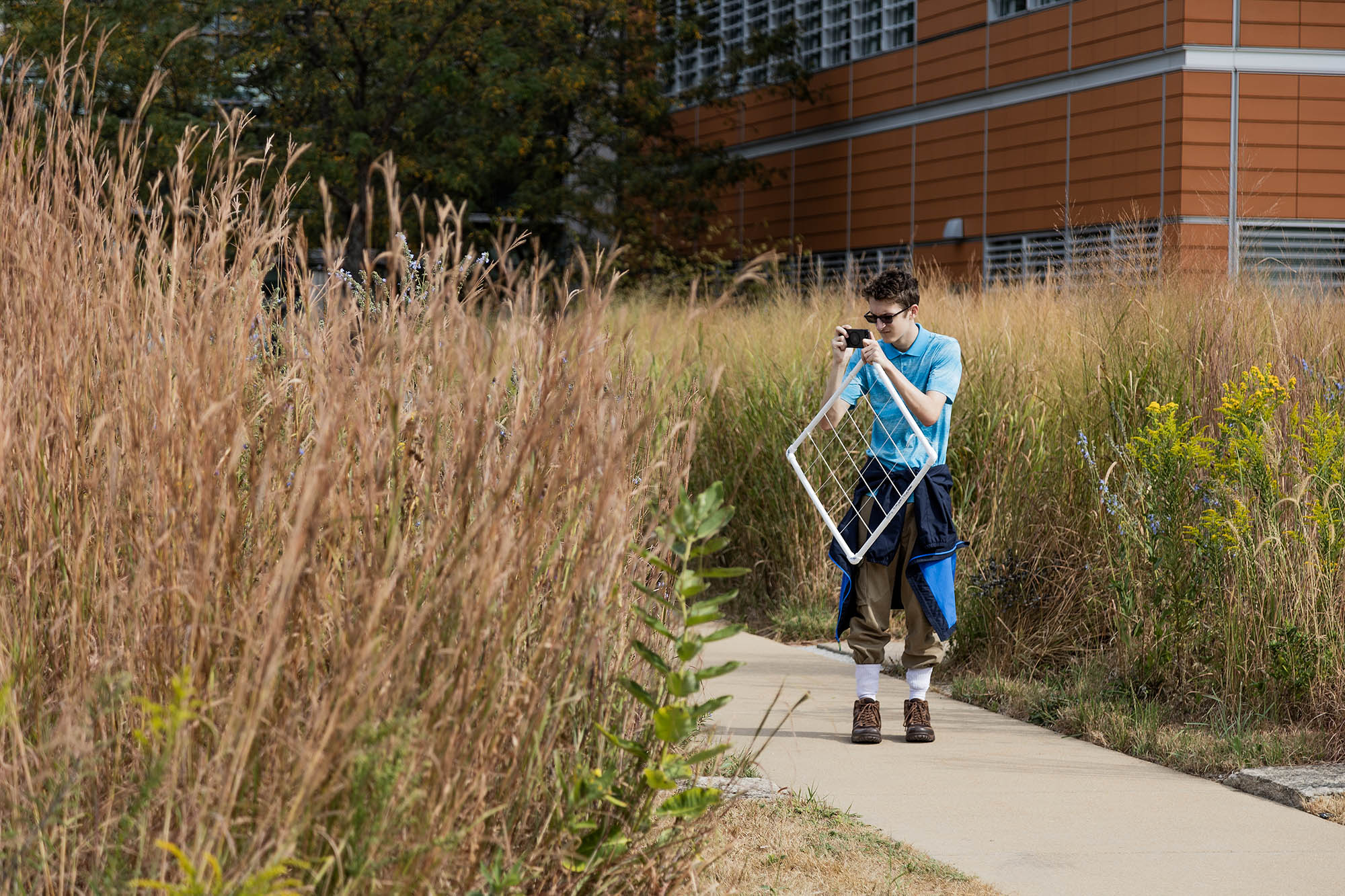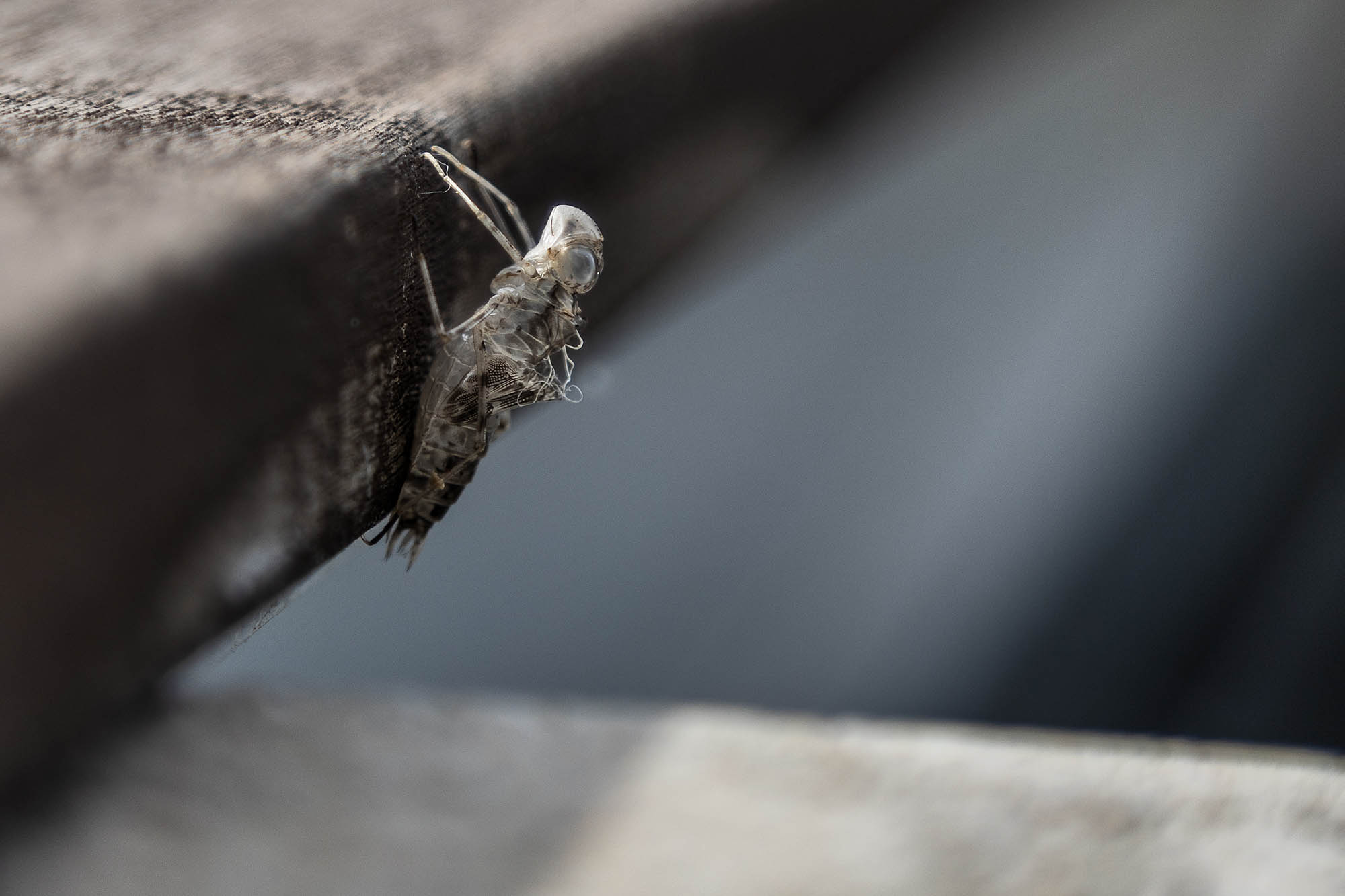Midwestern prairies can look homogenous as one whips by in a car. There is much to learn from them, though, if you stop and take a close look. And after Upper School Science Teachers Dr. Christine Pickett and Dr. Ethan Graf led their students through an up-close and personal investigation, whole new worlds opened up.
To start, biology students headed to the north end of A Lot on campus, where a sign peeks through the tall plants: Prairie Restoration Area. Using quadrats, they collected a wide variety of data to calculate percent cover, identify species, and calculate biodiversity.
A thorough analysis requires comparing data from one sample to another, so all four classes headed to the nearby Danforth Plant Science Center to conduct the same investigation there. They identified species, spoke with professional scientists, and calculated percent cover and biodiversity.
Back in the classroom, students spent time comparing the two prairies using a Chi-Square statistic, determining if our prairie at MICDS is a good representation of a restored prairie…OR…is it very different from a restored prairie (Danforth) and why?
The lesson incorporates Integrated STEM Practices (ISPs) into student learning: Use critical and creative thinking to define challenges and seek solutions, collaborate and use appropriate tools to engage in iterative design, communicate solutions based on evidence and data, and recognize and use structures in real-world systems.
This project has been run in the past, but the comparison prairie was documented and photographed by teachers, not students. We are fortunate to have great partners at Danforth Plant Science Center who have extended learning opportunities with their grounds and their experts.
